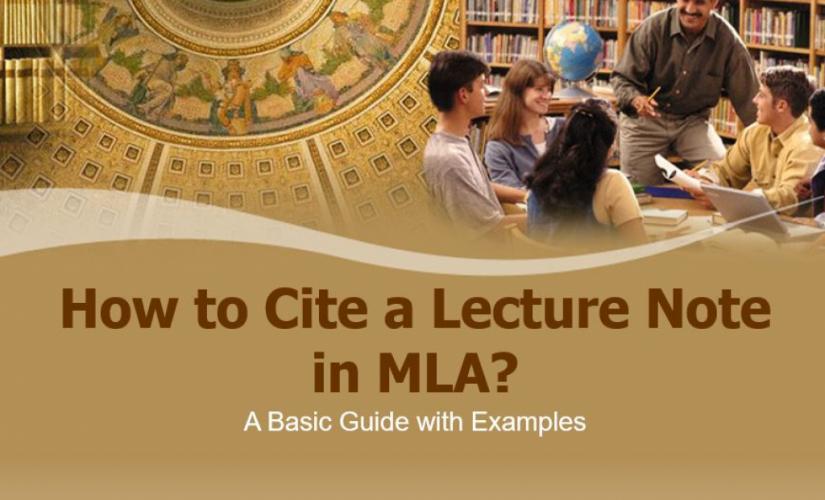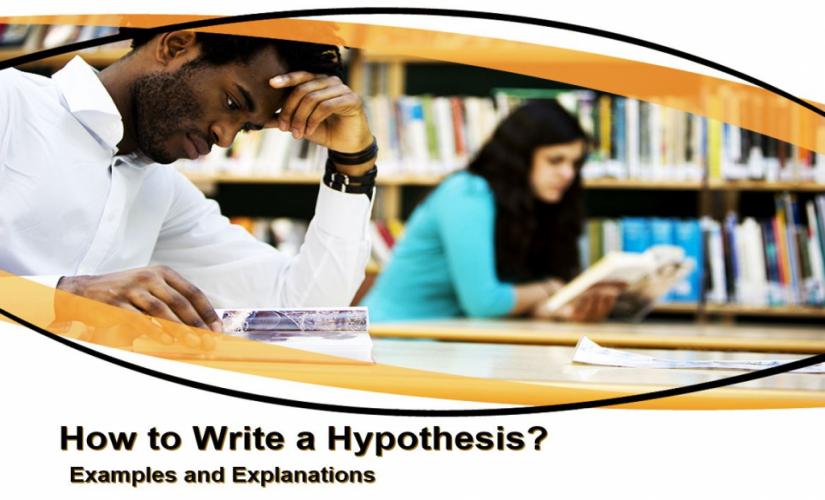Lecturing is one of the ways that higher learning institutions expose students to knowledge in various disciplines. In a typical semester, students get an array of lecture notes that they have to cite when writing academic papers. In this case, they must understand how to cite such notes. Moreover, the most important detail that a student should master is that a citation of lecture notes has several components. Basically, in the MLA format, these elements include the name of the speaker, the presentation title, the name of the course or event, the date of delivery, the venue, and the presentation type. In turn, ensuring these features appear correctly is essential, depending on the paper format. Hence, students need to learn how to cite a lecture note in MLA to provide appropriate academic papers.
General Aspects of Citing Lecture Notes in MLA 9
In the course of their studies, students get an opportunity to engage in various forms of writing, an exercise that enriches their knowledge levels. For example, lectures are educational sessions that provide students with insights into various subjects, especially in higher learning institutions. In most cases, college and university professors give lectures, either orally or in written text. Also, the Internet is full of lecture notes that scholars have delivered on various platforms, including university auditoriums. In turn, a typical presentation note in MLA consists of the name of the speaker, the presentation title, the name of the course or event, the date of delivery, the venue, and the lecture type.
How to Cite Lecture Notes in MLA 9
As already stated above, when citing lecture notes in MLA 9, a student must indicate various features correctly in alignment with the standards of the paper format in use. However, other details are critical, as well. Firstly, students must understand what kind of notes they are citing – whether it is a class lecture, conference speech, or forum presentation. Secondly, writers must find out if they are required to cite any comments made about such types of sources.
1. Citing the Speaker’s Name
When citing lecture notes in MLA 9, the first thing that a student should do is cite the speaker’s name. Basically, the name should appear in reverse, meaning that the last name should come before the first name, separated by a comma. In most instances, lecture notes have speakers identified, who happen to be resident or visiting professors. For presentation notes posted on the Internet, the speaker’s name appears as the author, unless the article is a review of lecture notes. Even in that case, reviewers mention the original speaker. In turn, if a PowerPoint presentation has no speaker, students should substitute the name with its title.
2. Citing the Lecture Title
The next feature that comes after the speaker’s name is the lecture title, which should be in quotation marks and then a period. For example, students can find the title in the course syllabus, conference program, publicity materials, or the Internet. Also, if students are citing a class lecture, they should provide the working title in quotation marks and the name and number of the course. In turn, if class presentations do not have the title, writers should provide the course name and number. Hence, a student can locate the title of lecture notes easily.
3. Citing the Course/Event
After the title, the next feature is the name of the course, conference, or event, followed by a period. For instance, if discussed notes mean a class lecture, the class or course name is the event. Basically, students should not use quotation marks. In turn, writers may use more than one event if the lecture is conducted through themed sessions. Like the title, students can locate the event in the course syllabus, conference program, publicity materials, or the Internet.
4. Citing the Date
After the event, the next feature is the date (when the presentation is delivered), followed by a period. For example, students should indicate the date as per the international format – day month year. Apart from May, June, and July, students should abbreviate the names of months, using four letters for September and three letters for all other months. In this case, students should complete this part with a comma when citing lecture notes in MLA. Like the other features, a student can access the lecture date from the conference program, publicity materials, or the Internet.
5. Citing the Sponsoring Institution
After the comma, writers should mention the institution that sponsored lectures, which are universities in most cases, followed by a comma. For example, if the institution’s name is missing, students should identify the lecture venue to get an idea about the sponsoring institution. In this case, if a lecture is delivered in an auditorium, authors should identify the institution that owns the auditorium and place it as the sponsoring institution. However, if lecture notes are a class lecture, students should ignore this feature. For published working notes, writers can access information about the sponsoring institution from the conference program, publicity materials, or the Internet.
6. Citing the Venue and Location
After the sponsoring institution, the next feature that students should indicate is the location or venue where the lecture is delivered and the city. Basically, authors should separate both details with a comma and put a period after the city. About the location or venue, most presentations take place in auditoriums affiliated with colleges and universities. Therefore, if the city’s information is missing, students should research the city by using the name of the venue (auditorium). However, for venues with names of colleges and universities with their cities, writers should not mention the city. To find information about the venue and the city, students should consult the conference program, publicity materials, or the Internet.
7. Citing the Lecture Type
After the venue and the city, the next feature that authors of academic essays should capture in their citation is the type of presentation. Basically, students should indicate this information as Reading, Lecture, Address, Presentation, or Keynote Speech, followed by a period. In this case, lecture notes come in different forms, such as class lectures, conference speeches, and forum presentations. To identify the type of lecture, students should consult the conference program, publicity materials, or the Internet.
Schema of a Lecture Note Citation in MLA
1. Works Cited:
When citing a lecture note, a student should follow the following outline:
- Speaker’s Last name, First name. “The title of the lecture.” Course/Event, Date, Venue, City. Lecture.
An example of a lecture note found online is the one titled “Really Achieving Your Childhood Dreams” by Randy Pausch. The citation of this lecture in MLA should read as follows:
- Pausch, Randy. “Really Achieving Your Childhood Dreams.” Journeys, 18 Sept. 2007, Carnegie Mellon University, McConomy Auditorium, Pittsburgh, PA. Lecture.
2. In-Text/Footnote Citation:
Structure:
- (Surname page/paragraph number, line, powerpoint slide, etc.)
An example of the in-text citation for lecture notes/slides is:
- (Randy 2)
Citing a Lecture Comment in MLA
If there is a comment made on a lecture note while students are expected to cite it, they should substitute the name of the speaker with that of the student or person who has commented. Basically, writers should also substitute the lecture title with the subject of the discussion or title of the presentation. In this case, the approach should include the last name of the person who has commented and then their first name. Moreover, the title of the discussion or presentation must include the name of the course or event, the date when the comment is made, the venue where the comment is made, the city, and the description of the comment. In short, the citation should read:
Last Name, First Name. “Title of the Discussion/Presentation” Course/Event, Date, Venue, City. Discussion/Presentation.
Summing up on how to Cite Lecture Notes in MLA
When citing lecture notes in MLA, students must consider several things. Firstly, they should understand what kind of presentation it is – a class lecture, conference speech, or forum presentation. Basically, this information is critical for a student as it informs the approach they should take when citing the lecture. In essence, a student should learn the following tips about a citation of lecture notes in MLA:
- Identify the name of the speaker.
- Locate the title of the lecture.
- Cover the sponsoring institution.
- Include the date when it is delivered.
- Locate the venue of the lecture.
- Identify the location of the venue.



